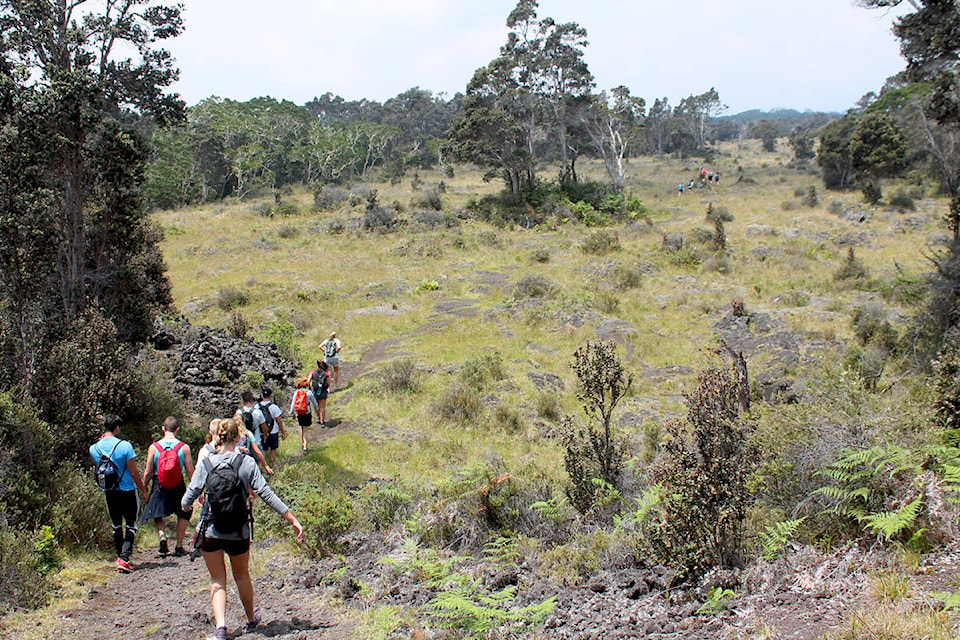By David Clements
Most of the time we take it for granted — walking on solid ground, knowing that ground we walk on will not abruptly shift or burst with molten lava.
This past month was a good reminder for my students and I that we live on a dynamic planet that is still very much an unfinished story. I was teaching a travel study class from Trinity Western University on the Big Island (Hawaii) — the one that is undergoing volcanic conniptions at the moment.
The Big Island is the youngest of the Hawaiian islands, so everywhere we went there were reminders of “recent” volcanic events, geologically speaking. Even though we couldn’t go near the site of current volcanic activity, lava was omnipresent.
Yet life finds a way! As we hiked through old lava fields, we got to see the plants we were studying finding niches, even within the barren black, rough lava that we had to tread carefully on ourselves (as it turned out I was the only one who stumbled and fell on the lava — providing a good example of what not to do).
At one site we visited, the written trail guide pointed out the fact that most of the plants at that particular spot grew in cracks in the lava. Sure enough, we saw small ohia lehua trees and ferns poking out of the cracks — to someday grow into a forest like the forests we saw nearby on older lava flows.
One of my students, Kezia Ewert, in fact did a “crack project” where she looked at the lengths of cracks to see whether different crack sizes attracted different plants. Her preliminary observations suggested that the amazing ohia lehua seemed to be attracting enough soil to start filling in the cracks.
I asked some of the people who work at Hawaii Volcanoes National Park what it was like for them amidst the current volcanic activity. Although they admitted it was stressful, they said it was also an exciting time to be there and witness the power of new lava coming forth from the earth.
In those areas of the island where fissures are releasing red-hot burning lava, as well as consuming human structures, the fires are ripping through the vegetation. But wait a few years, and seeds will sprout within the fresh cracks, bursting with new life.
David Clements is Professor of Biology and Environmental Studies at Trinity Western University
Like us on Facebook and follow us on Twitter
